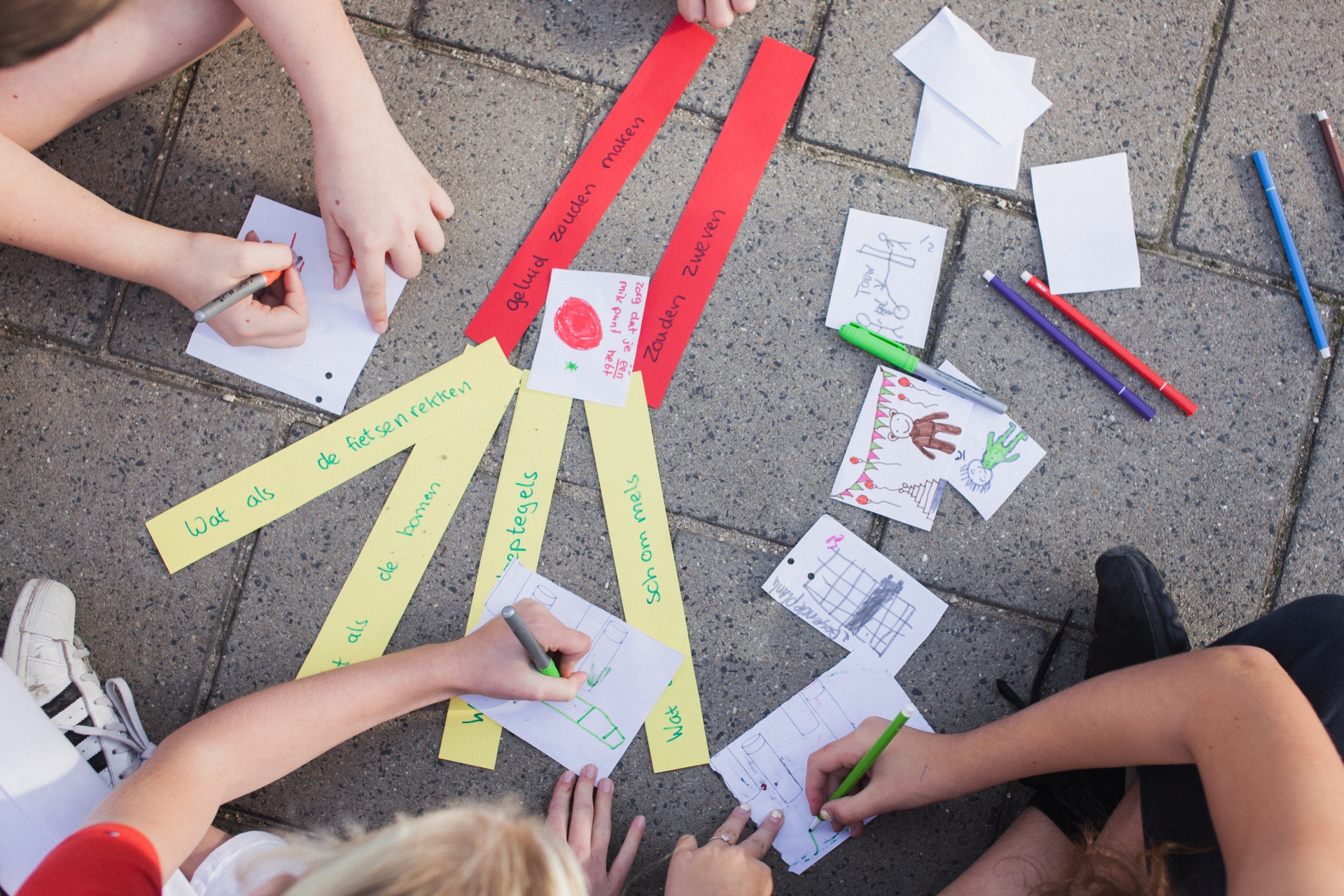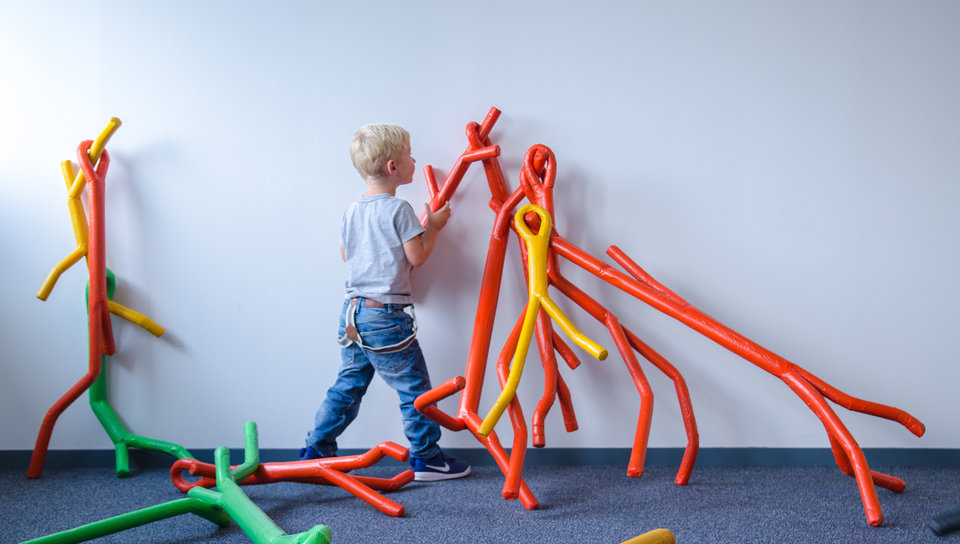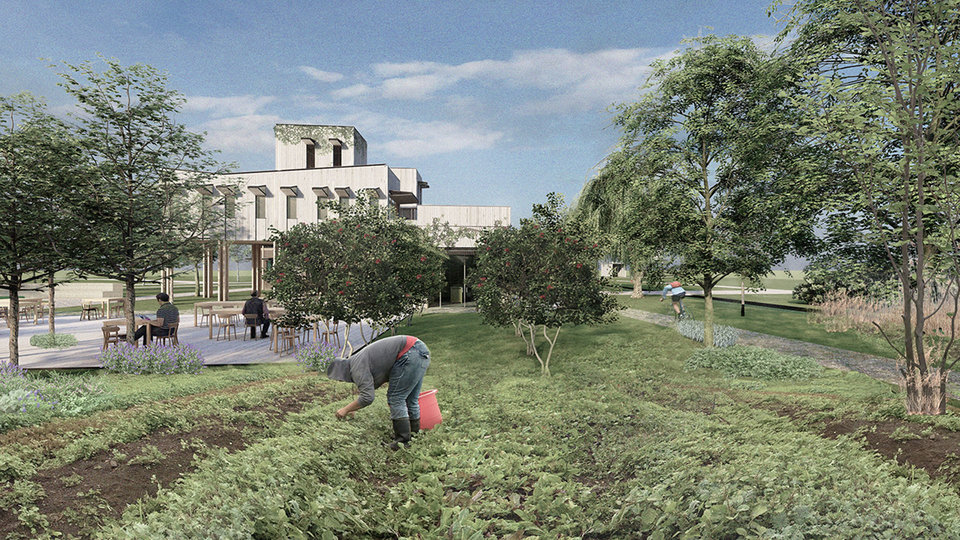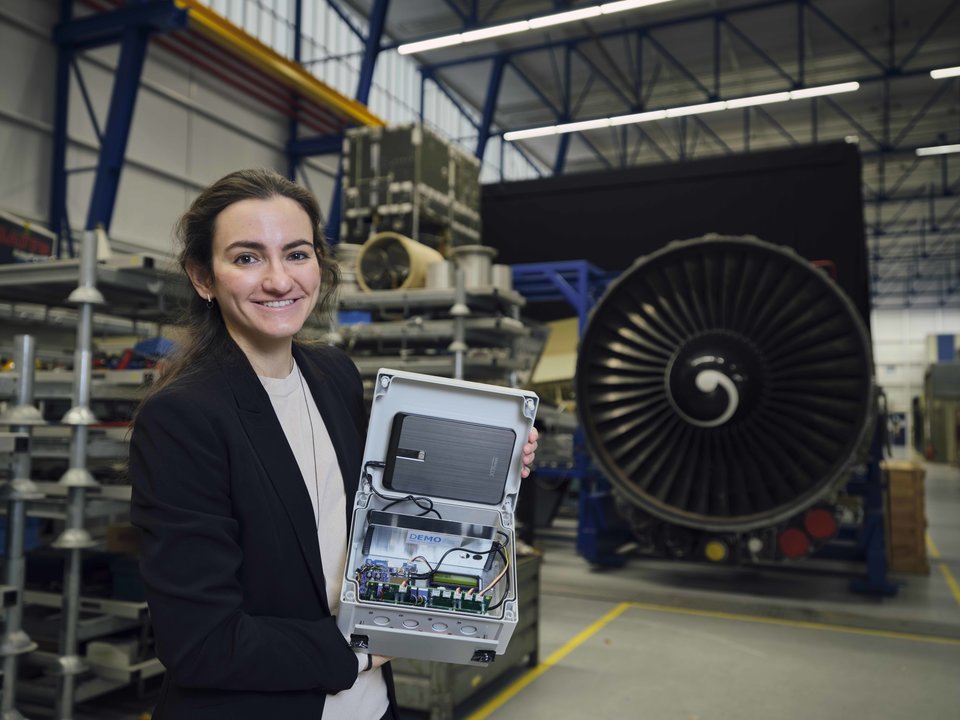What designers and children can learn from each other
Why do we have to go there? Why do I have to wear this? Parents of young children will recognise these questions all too well. But can you blame children for asking them? When you are young, you have little influence on the world around you. Parents, teachers and doctors decide almost everything – albeit with your best intentions at heart. What you must wear, when you will go to the hospital for surgery, how many books you may borrow from the library. It’s out of your control. How do we know the decisions we as adults make for children are right for them?
Mathieu Gielen, design researcher at Delft University of Technology, is looking at using design methods to engage children as designers of their own world. Providing the right environment for children is a big responsibility for elementary teachers and designers alike. Mathieu is on a mission to help them. With the Co-Design with Kids project team, he created a coherent and scientifically tested set of tools that can teach children to harness their creativity and design for themselves, while also aiding designers to facilitate children’s own worlds.
The first playgrounds were developed in the 19th Century in Germany and Manchester, England. The idea was to give children an autonomous place to play and create, while also controlling their play. There have been movements to ‘free’ up design for children and play, with notable examples such as Isamu Noguchi’s Play Mountain in Sapporo in the 1930s and New York in the 1950s and 60s and Eric McMillan’s designs in 1970s Toronto. But as Alexandra Lange writes in her book ‘The Design of Childhood’: “Playgrounds are places made by adults, for children, always with the hope of harnessing their play to a specific location.”
Teaming up
Designing for children comes with responsibilities and unforeseen consequences. For instance, children who undergo surgery have to wear certain gowns that we as adults have decided are best for them from a medical point of view. But hospitals and operating rooms can be scary, especially for children. In these overwhelming situations, it could help children if they felt a little more in control - starting with the question of what they wear. If you are a designer that works on these kinds of projects for kids, how do you know whether what you’ve designed is any good? “Before the Co-Design with Kids project started, then graduate student Thomas Latcham researched exactly this phenomenon. He came up with interesting results”, Mathieu says.
As a Delft Designer, Mathieu is trained in various design methods, such as co-design. With this method, designers involve the end-user from the earliest possible stage in the process. They go through multiple iterations of the concept together in order to come to an effective end-product or service.
So when designing a gymnastic hall or activities to make physical education class more attractive for children, why not use the unbridled creativity of children in the design process? Because, in Mathieu’s words, “if you want to design for children, you have to design with children.” Co-design as a method has proven to be very effective in several other European projects, from developing new cash-machines together with customers, to redesigning entire streets in Bratislava together with local entrepreneurs. But Mathieu wanted to push the boundaries of co-design. He wanted to find out if children could design for real-life clients. The ultimate goal was to create a research tested toolbox for teachers and designers to co-design with kids.
Methods for creativity
Harnessing children’s creativity by letting them design themselves is easier said than done. “Children fall in love with their first idea and often find it difficult to engage in rounds of elaboration.”, Mathieu explains. “For kids to contribute in a design process, they need to learn skills we designers take for granted, like associative thinking or techniques for comparing ideas.” Coincidentally, these types of skills have been dubbed essential for the future by the Organisation for Economic Cooperation and Development (OECD), as increasingly connected technologies add complexity to our society.
Mathieu explains: “A few decades ago the role of the designer was to create individual products, but now we are also designing services, systems, and applications to improve the quality of life, or tackle major problems in society. Our field of work has become broader and more complex as well. We need to engage in a dialogue with society at large to figure out what the real underlying problems are, to be able to do our work as designers.”
The proof of the pudding
Together with a team of specialists in industrial design and the colleagues from the Science Education and Communication department of TU Delft, Mathieu set out to adapt methods and principles from the field of design into a Co-Design with Kids toolbox to suit eight to twelve year old children. Their aim was to support children through a full design cycle.
Mathieu’s team worked the developed tools into several lesson plans that would involve children carrying out design projects for actual clients. It was put to the test in primary school classes with The Hague Academy of Physical Education ( part of The Hague University of Applied Sciences) as the first client. Believing that not all children like certain activities offered in physical education (PE) classes, they wanted to find ways to make these classes more attractive. Under the guidance of their teachers and the designers involved in the project, primary school classes set out to find solutions for this design problem, using the new tools and teaching plan.
In the first session focused on defining the design problem, it quickly became apparent that the assumption of the client was flawed: children actually like PE! What they didn’t like was the way these activities were structured: queuing up for your turn, the unfair way teams are chosen, the way cheating is dealt with. By using the co-design with kids tools, the children redefined the problem. That process provided valuable insights for their client, so much so that “after one session, the Hague Academy of Physical Education already deemed that co-design project a great success.”
With their unforeseen questions, alternative perspectives and relevant solutions, the children proved their contribution not just in rethinking PE lessons, but in multiple subsequent test cases. Clients’ reactions not only showed the effectiveness of the developed toolbox and co-design with kids lessons, but also the value of co-design methods for designers to engage in the dialogue with our society. But as Mathieu argues, these methods demand a lot.
The Dutch National Outdoor Lesson Day on 22 September aims to let children be active and outside during class. By taking classes outdoors, children learn better and more effectively: there is room to play and to discover. Due to the 2020 Corona-crisis, this had taken on a different meaning, and children being outside is now a more important topic than ever. The Outdoor Lesson Day is an initiative by the Jantje Beton Foundation and IVN Nature Education. In collaboration with them, Co-Design with Kids created a lesson plan for elementary school teachers and children to design their own outdoor lesson.
Find out more (currently Dutch only)
Reciprocity
“With co-design, we ask people to invest their time,” Mathieu explains. “In our case, we take up precious school time. Our teaching plan takes up twelve hours in class. So the question is, what is in it for them?”
In the long term, Mathieu explains that : “if we do our jobs well as designers, we will come up with a solution together that improves their lives somewhere in the future.” But more concretely, the Co-Design with Kids toolbox was developed specifically to teach skills such as creativity, empathy and communication. “We are talking about design skills and methods as a means to teach general skills that are necessary to cope and be successful in a rapidly changing and increasingly complex society.”
As such, the toolbox for designers and the teaching plan for primary school teachers provide a method for designers to engage in dialogue and involve end-users in the design process. It provides a project-based teaching method for primary education to integrate teaching and training 21st century skills in their curriculum, and an immediate and invaluable reward to the kids as co-designers. In Mathieu’s words: “The beauty of our toolbox is that, besides being meant for facilitating co-design, these tools are aimed at teaching and training valuable skills. As such it is a more reciprocal system. In exchange for twelve hours of their school time, our tools provide the children fun, a sense of accomplishment, and valuable 21st century skills that are useful for the rest of their lives.”
Shape your own world
We take great care in ensuring our children’s environment is a safe and nurturing. We stimulate them to loan books from the library to discover the joy of reading and the power of building worlds in their imagination. But for children, it’s sometimes hard to know what to choose: what would I like? In one of the lead-in projects of the Co-Design with Kids, then-graduate student Fenne van Doorn developed a toolbox that helped a library and children to co-create a handy little system together that lets children recommend books to each other.
As Mathieu argues, wouldn’t it be great if kids are invited to help shape the world around them? All while being trained to excel in that world when they grow up.
More information and the Co-design with Kids toolbox (in English) for designers can be found on: www.tudelft.nl/codesignkids
All four full and detailed teaching plans (in Dutch) for teachers are available on: www.tudelft.nl/yourturn

Mathieu Gielen
- +31 (0)15 27 81744
- M.A.Gielen@tudelft.nl
- Publications
-
Room C-3-270
"A serious interest in play."











